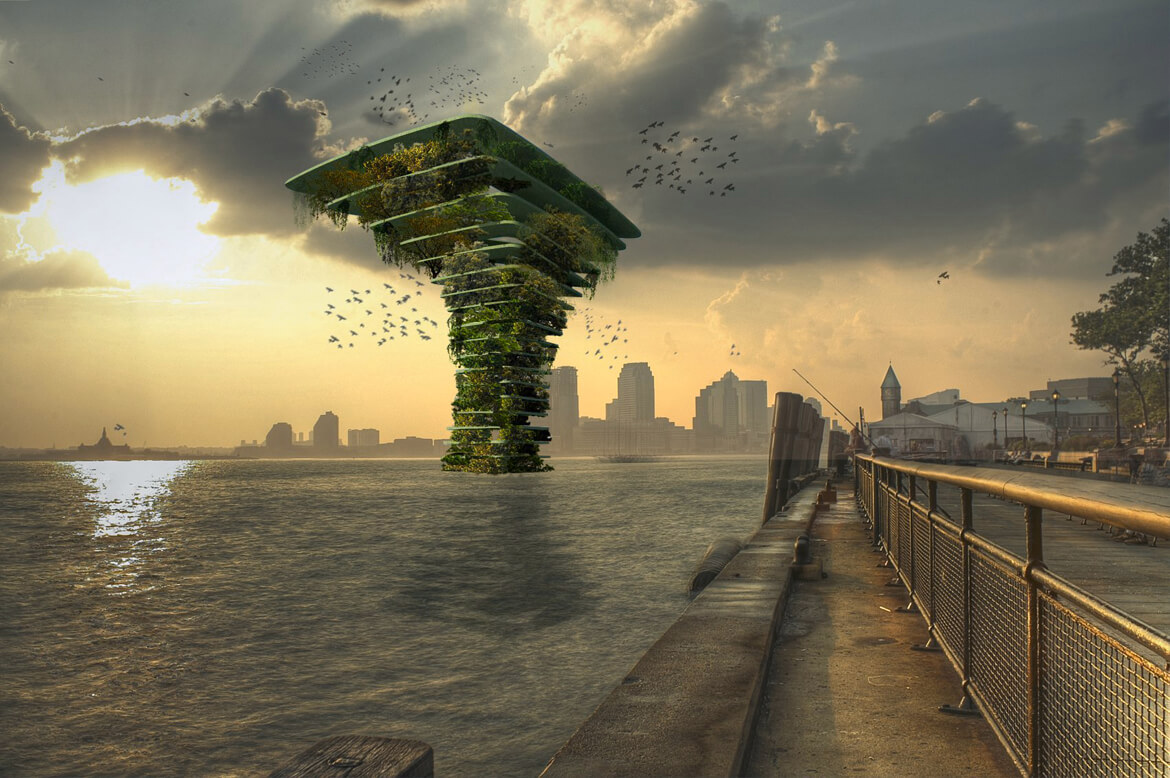
How Can We Waterproof Our Future

Inhabitat, Yuka Yoneda, Feb 2014
When the movie Waterworld premiered in 1995, people regarded the Kevin Costner flick as a fairly ridiculous post-apocalyptic science fiction film: Now, nearly two decades later, the tale’s premise of a world where nearly all land is submerged beneath the seas seems more like a prediction of what’s to come than a figment of a screenwriter’s imagination. With polar ice caps melting rapidly, the clear and present threat of rising tides is no longer something that can be pushed aside. According to current scientific estimates, the earth’s temperature will increase at least 4-5 °C by the end of this century, leading to a sea level rise of approximately 2-7 feet or more by 2100, which will submerge significant portions of many of the world’s major metropolitan areas, including New York, London, Shanghai and Mumbai. Since we’re facing some pretty catastrophic changes, some of the world’s best minds are working on solutions to prevent, or at the very least, minimize, the land loss and human habitat destruction that lies ahead. But between dams, water barriers and floating cities, it’s easy to get lost in the “flood” of different options for dealing with rising sea-levels. Bettery Magazine recently broke down our current situation and the various types of approaches which are being tried all around the world to deal with rising waters. Read Bettery’s full report for a better understanding of how we can waterproof our future.